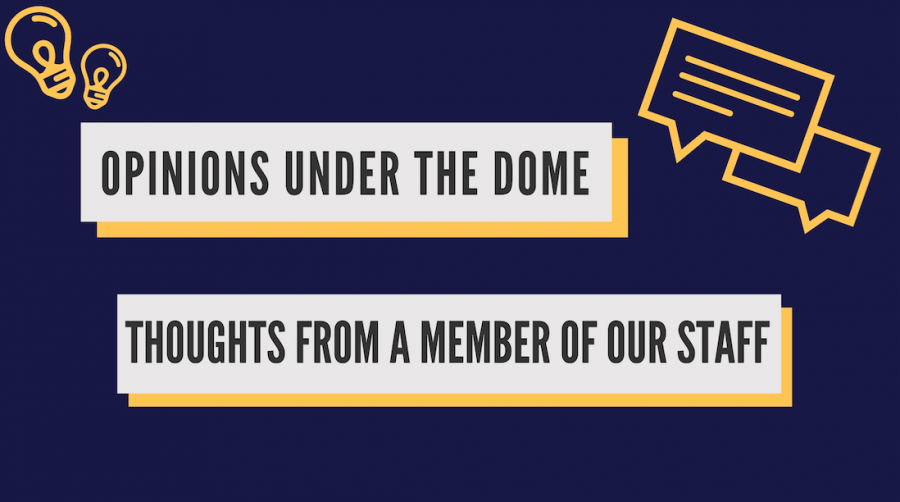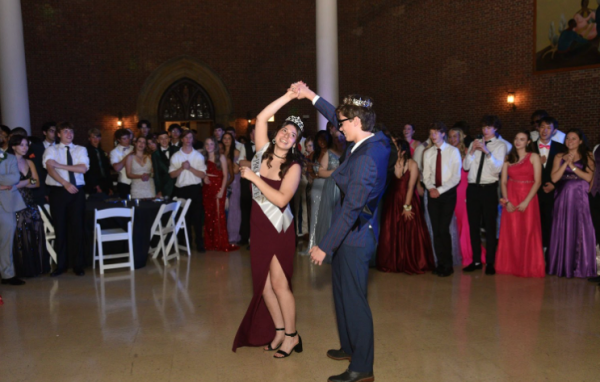Sign of the times
Culture often overlooks importance of ASL
It is hard to remember every single social media post I come across. As I spend hours on end scrolling through Instagram and Facebook, I see hundreds of videos and pictures pass in the blink of an eye. There has always been one video, in particular, that’s stayed with me.
That video was of a Chick-Fil-A employee, communicating with a deaf customer by using the primary language of those who are hard of hearing: ASL.
It struck me that this was the first time Cynthia Walker, the 20-year-old deaf customer, was able to order her meal at the North Carolina restaurant by herself. Her mother, Terri, explained the struggle of seeing her daughter be isolated from a normal conversation: ”People just look at her, then they look at us like what are we supposed to do?” Walker said.
On April 15, 1817, the first school for the deaf in the United States opened the American School for the Deaf. This landmark movement toward deaf rights has been marked yearly on April 15 as National ASL Day. Though society has certainly become more open and accepting toward ASL, deaf individuals who use the language still face struggles. As a result, there are still actions we can take to mutually improve the situation between those who are and are not reliant on sign language.
Firstly, it is useful to understand how ASL and the isolation of deaf people have been overlooked. Think of it this way: when students or tourists want to travel abroad, especially for longer periods of time, they tend to learn second languages that relate to their foreign destination, such as Spanish and French, in order to better communicate with natives. However, imagine not being able to effectively communicate with a majority of the citizens of your own country every day of your life, feeling like a foreigner in your own country.
This is a dilemma most deaf people have had to face. Daily activities as simple as buying food or attending a doctor’s appointment can seem like a struggle for those hard of hearing, and can often require assistance from someone else. This can leave deaf individuals without a sense of independence and feeling discouraged from participating in activities deemed commonplace for the rest of society. They are taught to believe by society that they can not be on their own.
Often times, these individuals can be isolated from their own family. Believe it or not, 72 percent of families do not sign with their deaf children.
Deafness in the United States has had a long and complicated history that has played to the widespread lack of recognition and acceptance of its prevalence in society. In the 1850s, John Flournoy, a deaf man, proposed to Congress that land in western territories should be used for the creation of a deaf state, where deaf people could make their own community and remain unbothered by the prejudice of the dominant hearing society.
In the nineteenth century ASL has suffered from movements of suppression. When researching ASL and its use in American society, you can find the existence of a historical movement that is not widely known or taught today. Following the Civil War, there was a movement to remove manualism, or the use of sign language in the classroom, and replace it with oralism, the exclusive use of lipreading and speech. Oralists believed the use of ASL to be damaging to deaf people, as it discouraged assimilation. It could be said that Oralists succeeded in their campaign, as by 1920, 80 percent of deaf students were taught without sign language as an option in the classroom. A harmful ideology, the insistence on oralism in classrooms is still pervasive in society today and tries to erase the prevalence of visual language to the deaf community.
Besides the social and communicative barriers present in society, the educational hardships facing deaf individuals are even more staggering: 98 percent of Deaf people do not receive education in sign language. Language deprivation is a real problem facing deaf children and results when a child does not receive sufficient enough language instruction to learn any language or readily develop cognitive capabilities. When a visual language such as ASL is not available to a child between birth and two years of age, it can cause irreparable harm to the communicative capabilities of a deaf child that can carry over to adulthood.
The golden rule states that you should treat others the way you want to be treated. I have been taught that since I first attended school. I believe this can be applied to the situation deaf people find themselves in today with hearing individuals. We need to do better and we can do better. One of the ways we can be more helpful as a society to deaf individuals is by making ASL easier to access by middle schoolers and high schoolers.
While it is great that elementary, middle, and secondary schools have increasingly answered the demand for sign language courses, there are still barriers for those who desire to learn. If ASL is offered, it is mostly found in specialized speech or disorder departments rather than a foreign language department. One of the reasons this occurs is because of the limited amount of licensed instructors of ASL. There can often be many requirements in order to become instructors, including a verifiable proficiency in ASL and background in teaching a second language. This can quickly lead to a shortage in the availability of quality teachers.
It is easy for many people to oversimplify ASL. However, it is not just a collection of gestures. ASL is a complex language the contains similar subtleties to that of a spoken language. There are a number of differences between ASL and English that reflect that ASL has a grammar of its own. As such, ASL is a challenging language that requires close study and practice, like many other foreign languages offered in the classroom. Though it is not easy, to the around 500,000 people that rely on ASL as their natural language, the process required to learn ASL and the money required to fund it is well worth it as an increased means of possible communication.
It has been reported that 70 percent of deaf people don’t work or are underemployed, and 1 in 4 deaf people has left a job due to discrimination. While these are flooring statistics, it is important to know that we can all make a difference for the deaf community, big or small, hearing or hard of hearing. It can even be as small an occurrence as making someone’s day a little easier.






